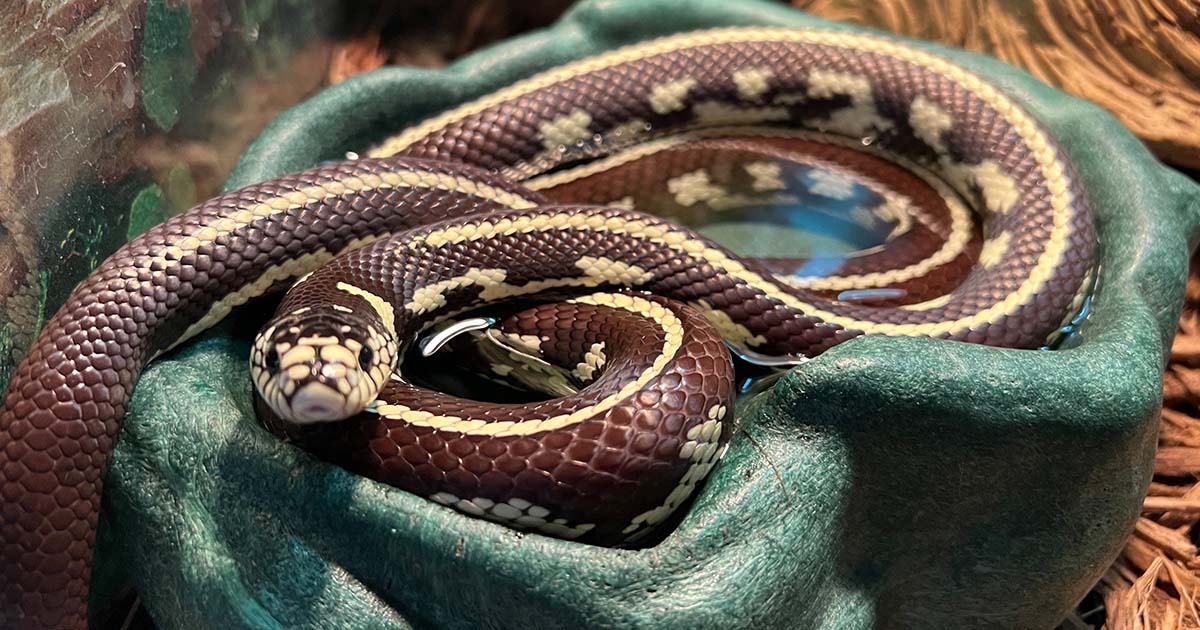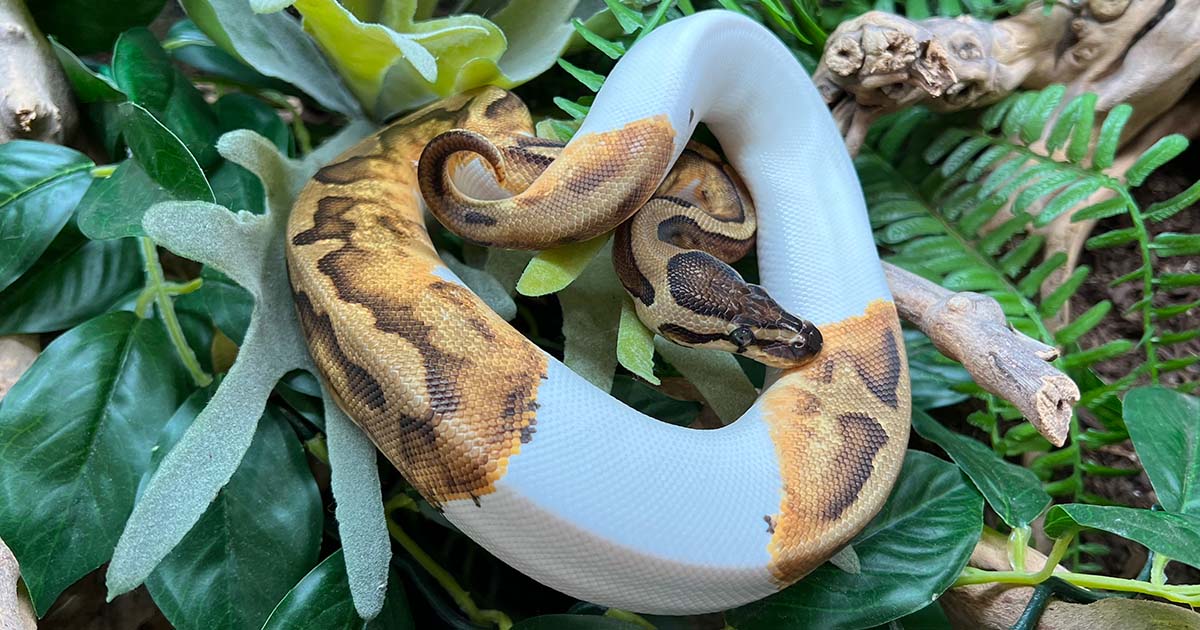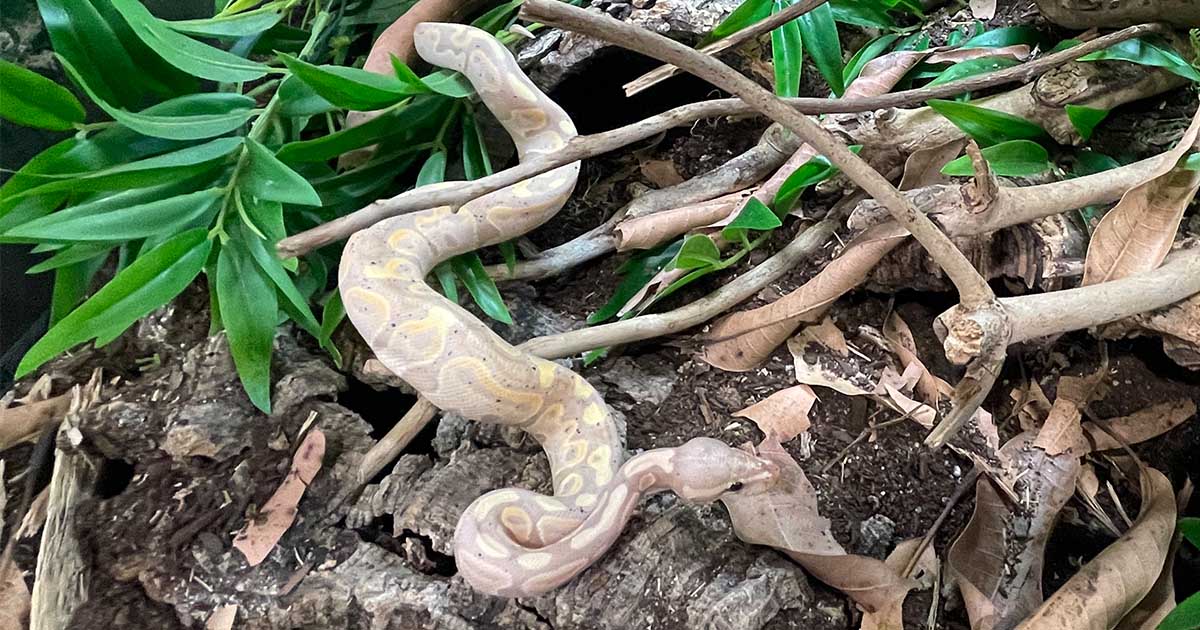For those fascinated by the world of reptiles, the king snake is a true marvel. These majestic creatures are not only masters of camouflage, but they also have a fierce reputation as hunters. Yet, one question continues to baffle even the most seasoned herpetologists – just how big do king snakes get?
Whether you’re considering adding kingsnakes for sale to your collection or just curious about these magnificent creatures, understanding their size is crucial. In this article, we’ll dive into the sizes of snakes, from the smallest to the largest.
Furthermore, we’ll discuss the factors that influence their growth. Along the way, we’ll share why understanding the size of kingsnakes is vital for anyone who wants to keep them as pets.
So, get ready to unravel the mysteries of king snake size – you won’t be disappointed!
How Big Do King Snakes Get? A Detailed Answer
Generally, king snakes are medium-sized snakes that can grow anywhere from 3-5 feet long, although some species can grow up to 7 feet long.
The average weight of a kingsnake is between 1-4 pounds, although this can also vary depending on the species and individual.
Categories of King Snakes Based on Size
King snakes have two categories based on their size:
- Small Kingsnakes
- Large KingSnakes
Small king snakes include species such as the Arizona Mountain kingsnake, which can grow up to 3 feet long. This category also has the Desert king snake, which can grow up to 4 feet long.
Large king snakes include species such as the California king snake, which can grow up to 5 feet long. The Eastern kingsnake is also large and can grow up to 7 feet long.
Factors That Influence the Size of King Snakes
Many factors influence the size of a kingsnake, such as:
Let’s dive into the details of these factors now.
1. Environment
The environment can also play a role in the size of a king snake. In the wild, kingsnakes that live in cooler climates grow larger than in warmer climates.
That’s because colder temperatures slow their metabolism, allowing them to grow more slowly and reach a larger size. However, keeping kingsnakes in an appropriate temperature range in captivity is essential to prevent health problems and ensure proper growth.
2. Diet
It won’t go wrong if we say that diet has a great importance in changing the answer of how big do king snakes get. Kings are carnivores that primarily eat rodents, birds, and other snakes. Their growth rate is directly related to the amount and frequency of their food intake.
Feeding a king snake too much can lead to obesity while providing it too little can stunt its growth. Therefore, it’s crucial to feed kingsnakes appropriately sized prey once every 1 week to help them grow at a healthy rate.
3. Genetics
The size of kingsnakes is largely influenced by genetics since various species and subspecies exhibit diverse growth rates and maximum sizes. Some kingsnakes, such as the Florida kingsnake, are known to grow much larger than other species.
Measuring the Size of Kingsnakes
You can measure the length and weight of a kingsnake using various techniques, such as measuring tape and a digital scale. To obtain the size, lay it flat and measure the distance between its nose and the end of the tail.
For weight measurements, you should place the snake on a digital scale and record the weight in either grams or ounces.
Why Knowing the Size of King Snakes is Important?
Knowing how big do kingsnakes get is vital for various reasons. First and foremost, it’s important for proper care. Different sizes of kings may have different care requirements, such as:
- Size of their enclosure
- Type and size of their food
- Temperature range they need
Owners can provide adequate care to ensure their health and well-being by understanding the size of a kingsnake.
Additionally, people also use snakes as pest control tools due to their ability to control rodent populations. By knowing the size of a kingsnake, pest control professionals can determine which species are best suited for their specific needs.
If you’re facing a significant rodent problem, a larger king snake will be your best bet for effective population control. On the other hand, if the infestation is smaller in scale, a smaller king snake will be more appropriate for the job.
Furthermore, knowing their size can be advantageous in breeding initiatives. Selecting and breeding kingsnakes for sale involves careful consideration of desirable qualities, such as:
- Size
- Coloration
- Temperament
By taking into account the size of potential breeding partners, breeders can make informed choices that guarantee the well-being of their offspring.
After understanding how big do king snakes get, are you interested in buying king snakes for sale? If so, it is necessary to do so from a reputable source such as a licensed pet store or breeder.
It helps ensure that the snake has been properly cared for and is healthy. And for this, you won’t find any store better than XYZReptiles.
Frequently Asked Questions
1. How often should I measure my kingsnake’s length and weight?
Remember to measure your king snake’s length and weight regularly, especially during periods of growth or if you suspect health problems. However, measuring too frequently can be stressful for the snake. So it’s recommended to measure once every few months or when you notice a change in behavior or appearance.
2. Can kingsnakes stop growing after a certain age or size?
Kingsnakes continue to grow throughout their lives, but their growth rate slows significantly as they age. The largest snakes tend to be older individuals with more time to grow.
3. Are larger kingsnakes more aggressive than smaller ones?
The size of a king snake does not necessarily correlate with its temperament or aggression level. Each snake has its personality and behavior. And many factors can influence it, such as environment and handling.
Thus, handling snakes gently and consistently is essential to promote positive interactions and prevent defensive or aggressive behavior.
Verdict
To summarize, the size of these snakes can vary widely depending on the species, genetics, environment, and diet. Generally, these snakes have a medium size that can grow anywhere from 3-6 feet in length. However, some species can grow up to 7 feet long.
Understanding how big do king snakes get is essential for proper care, breeding programs, and pest control efforts. By providing appropriate care and monitoring their growth, owners can ensure the health and well-being of their snakes for years to come.



